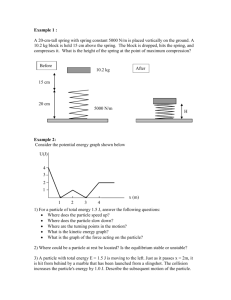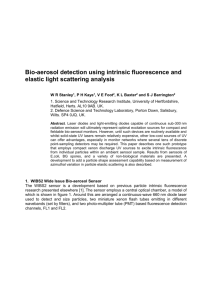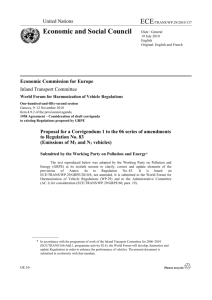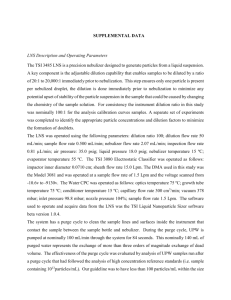Laboratory Experiments No 3: Calibration of an Optical Particle
advertisement
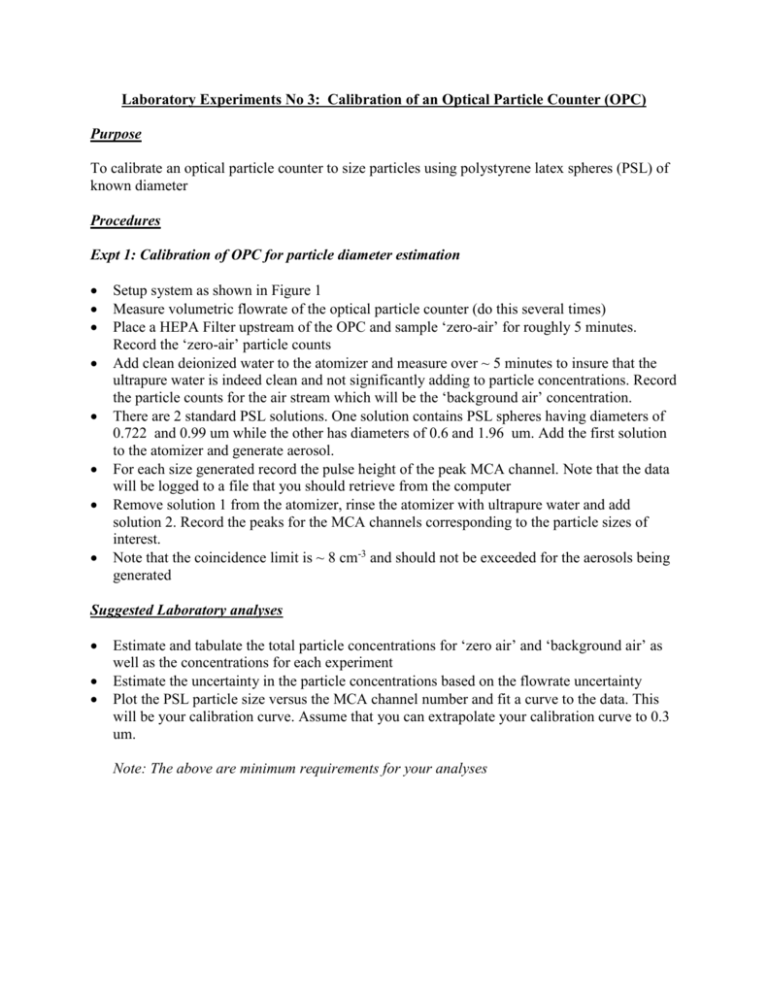
Laboratory Experiments No 3: Calibration of an Optical Particle Counter (OPC) Purpose To calibrate an optical particle counter to size particles using polystyrene latex spheres (PSL) of known diameter Procedures Expt 1: Calibration of OPC for particle diameter estimation Setup system as shown in Figure 1 Measure volumetric flowrate of the optical particle counter (do this several times) Place a HEPA Filter upstream of the OPC and sample ‘zero-air’ for roughly 5 minutes. Record the ‘zero-air’ particle counts Add clean deionized water to the atomizer and measure over ~ 5 minutes to insure that the ultrapure water is indeed clean and not significantly adding to particle concentrations. Record the particle counts for the air stream which will be the ‘background air’ concentration. There are 2 standard PSL solutions. One solution contains PSL spheres having diameters of 0.722 and 0.99 um while the other has diameters of 0.6 and 1.96 um. Add the first solution to the atomizer and generate aerosol. For each size generated record the pulse height of the peak MCA channel. Note that the data will be logged to a file that you should retrieve from the computer Remove solution 1 from the atomizer, rinse the atomizer with ultrapure water and add solution 2. Record the peaks for the MCA channels corresponding to the particle sizes of interest. Note that the coincidence limit is ~ 8 cm-3 and should not be exceeded for the aerosols being generated Suggested Laboratory analyses Estimate and tabulate the total particle concentrations for ‘zero air’ and ‘background air’ as well as the concentrations for each experiment Estimate the uncertainty in the particle concentrations based on the flowrate uncertainty Plot the PSL particle size versus the MCA channel number and fit a curve to the data. This will be your calibration curve. Assume that you can extrapolate your calibration curve to 0.3 um. Note: The above are minimum requirements for your analyses







